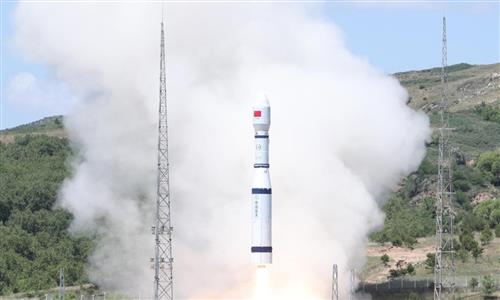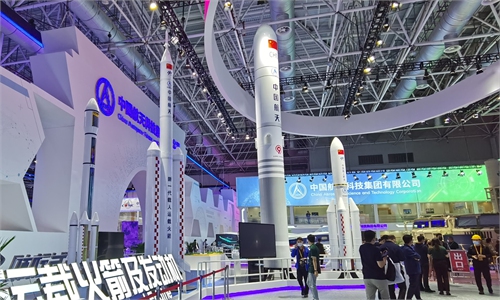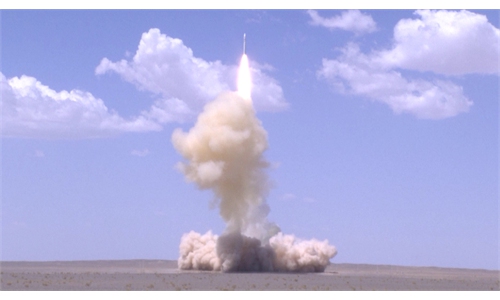Exclusive: Chinese private rocket company to launch ‘Falcon 9’ equivalent by 2024: TL-3 chief engineer
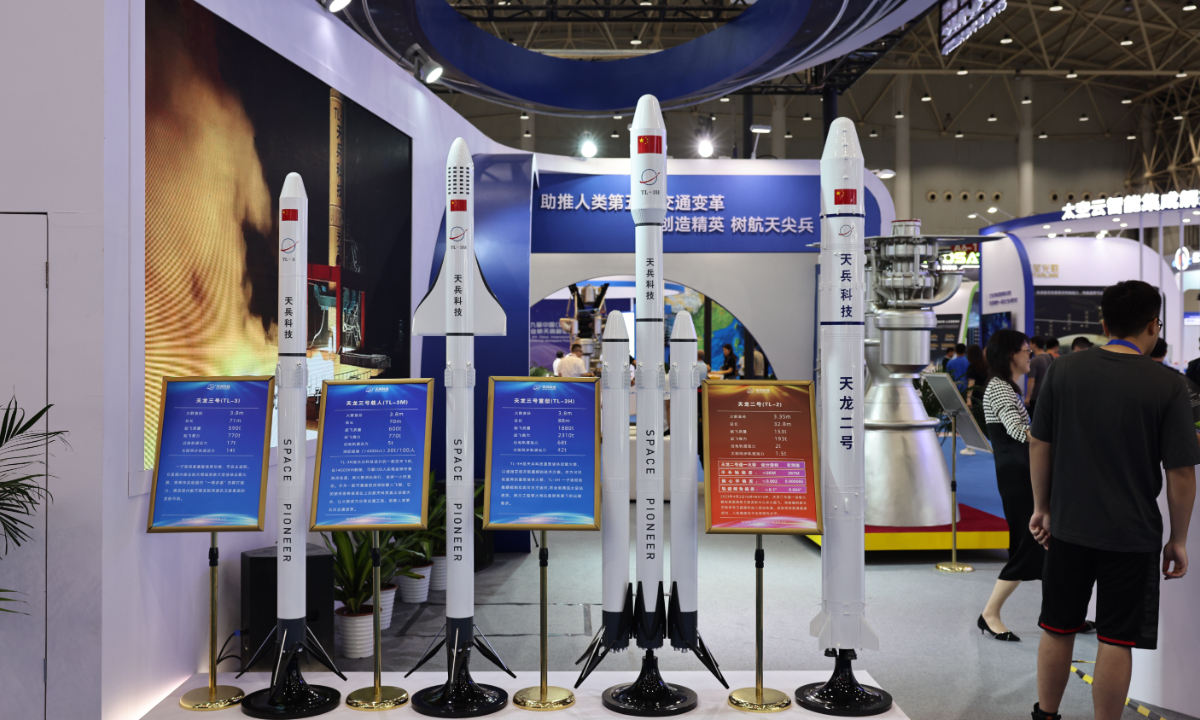
Rockets and rocket engines on display in Wuhan on Wednesday Photo: Deng Xiaoci/GT
Space Pioneer, a Chinese private rocket company founded in 2019, displayed four rocket models at the exhibition area of the Ninth China (International) Commercial Aerospace Forum (9th CCAF) in Wuhan, Central China's Hubei Province on Wednesday, and Liu Xinglong, chief engineer of the firm's new rocket model TL-3, told the Global Times in an exclusive interview that their new creation eyes maiden flight by May 2024 and they are planning to soon establish the capability to carry out 30 launches every year to better support the country's accelerating construction of new infrastructure in space.
The new TL-3 will be a two-stage liquid-propellant rocket that is capable of sending a payload of 17 tons to the low Earth orbit (LEO) or that of 14 tons to the Sun-synchronous orbit (SSO). The new rocket model will be 3.8 meters in diameter and 71 meters in length, with a weight at launch of 590 tons, providing a lift-off thrust of 770 tons.
Liu told the Global Times on Wednesday that the TL-3 will also be reusable with the first core stage of the rocket being recyclable. We are matching our game with SpaceX's Falcon 9 and our reusable rocket will also use the same vertical takeoff and vertical landing (VTVL) technology.
A brochure handed out from the Space Pioneer stand explains that the TL-3 will be reusable for a total of 10 launches.
Liu said that as seven of a total of eight engines of the two-stage TL-3 are part of the first stage, the reusability of the first stage means the cost for each launch will be significantly reduced, just like the Falcon 9.
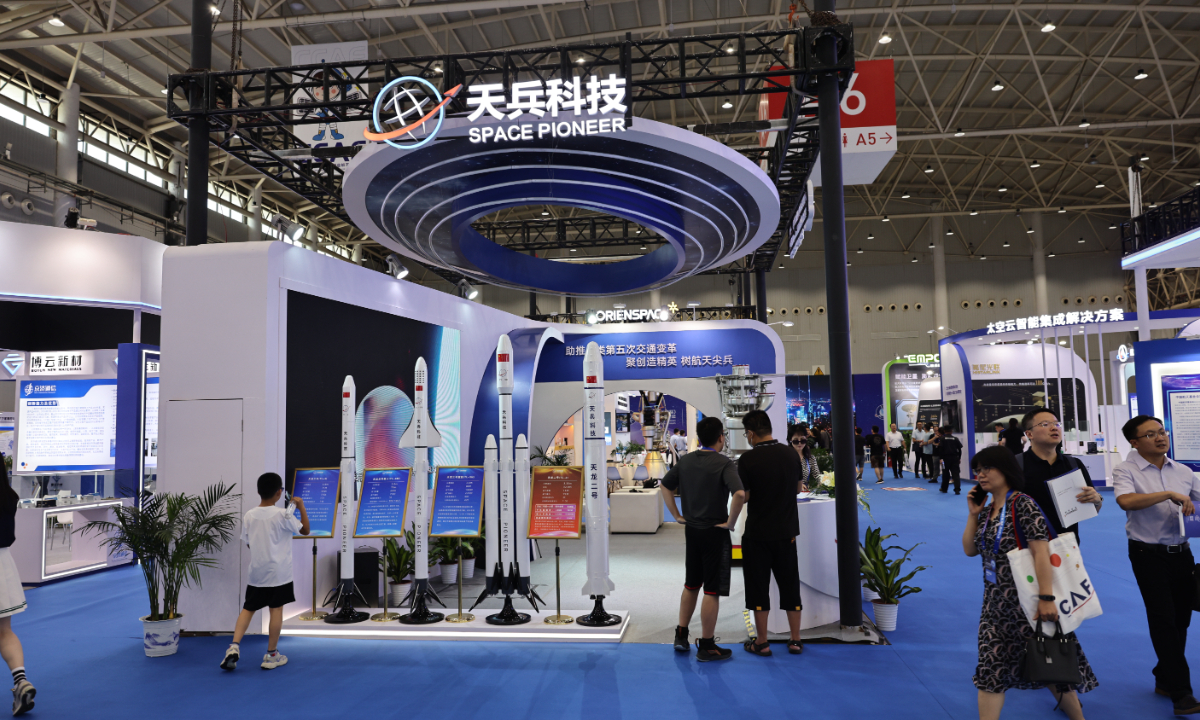
Rockets and rocket engines on display in Wuhan on Wednesday Photo: Deng Xiaoci/GT
TL-2, a smaller rocket model developed by Space Pioneer, recently completed a successful maiden flight in April this year at the Jiuquan Satellite Launch Center in Northwest China.
According to Liu, the TL-2 proved the company's capability of building a rocket that could send a payload of 2 tons into low Earth orbit. Since the maiden flight of TL-2, they have moved on and concentrated on the development of TL-3, which will be a highly efficient and low-cost launch vehicle to serve the country's needs of rapid construction of communication satellite constellation.
Liu said that the obvious drive to develop this larger reusable rocket is that the SpaceX is increasingly occupying the orbital resources with its super massive Starlink program and the program's military use potential is no secret. "We think we need to address this situation by constructing our own satellite constellation," said Liu.
Liu revealed to the Global Times that they are aiming to perform 30 TL-3 launches a year by 2025 in order to contribute to accelerating the construction of new internet infrastructure in space.
To achieve that, the firm has built up its own launch site at the Jiuquan Satellite Launch Center, and its own rocket manufacturing and assembly center in Zhangjiagang, East China's Jiangsu Province, has been built and ready to enter operations in October this year.
The rocket manufacturing and assembly center has the capacity of manufacturing 30 TL-3 rockets a year and six rockets at the same time. We are also able to manufacture 500 engines a year in the same facility, Liu said. We can now carry out manufacturing, integration, assembly and testing in the same facility, before we send our rocket by road to Jiuquan for launches, greatly boosting the efficiency.
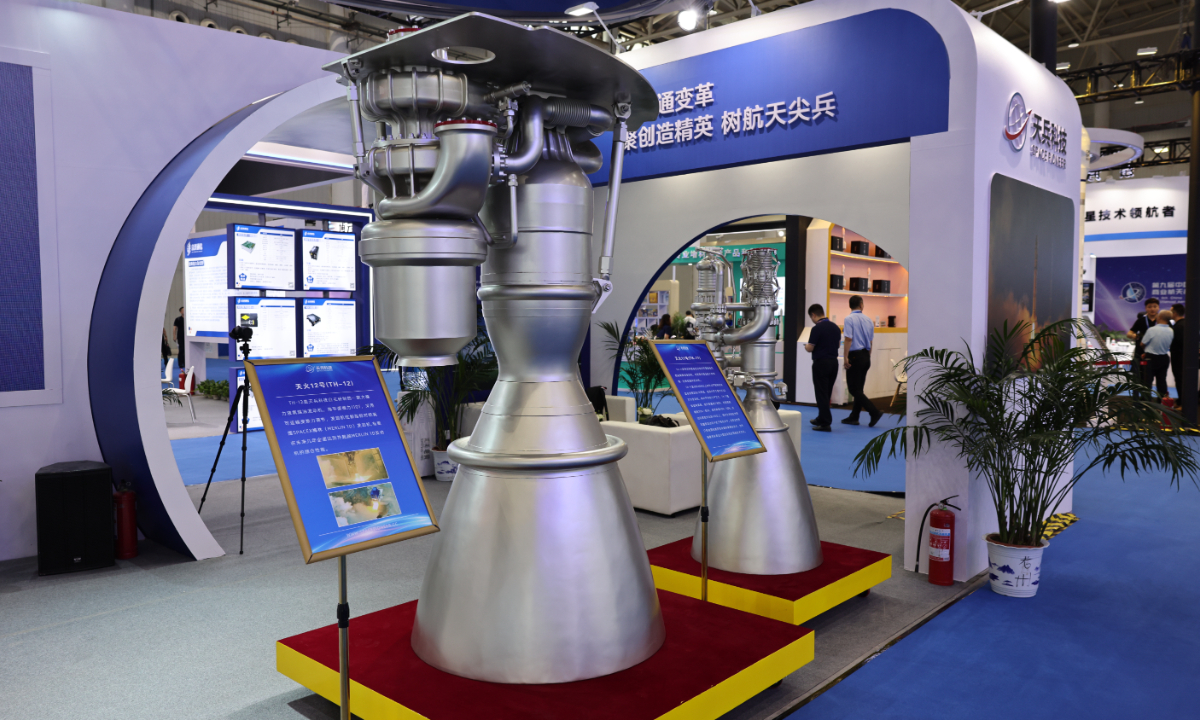
Rockets and rocket engines on display in Wuhan on Wednesday Photo: Deng Xiaoci/GT
The company also deploys 3D printing technology in building the new TH-12 engines for the TL-3 rocket, some 60 percent of the engine structure is created using this technology.
Liu believes that global high-speed transport is the future of connectivity. He also stated that after they pull off the first flight for the new TL-3 rocket next year, they will soon invest to carry out research and development for a manned flight version for the TL-3, which is codenamed TL-3M.
The TL-3M will be able to carry cargo of 30 tons or 100 passengers from Beijing to New York within one hour. "We are planning to carry out the first flight using a TL-3M for a cargo run by 2028 at the latest."

